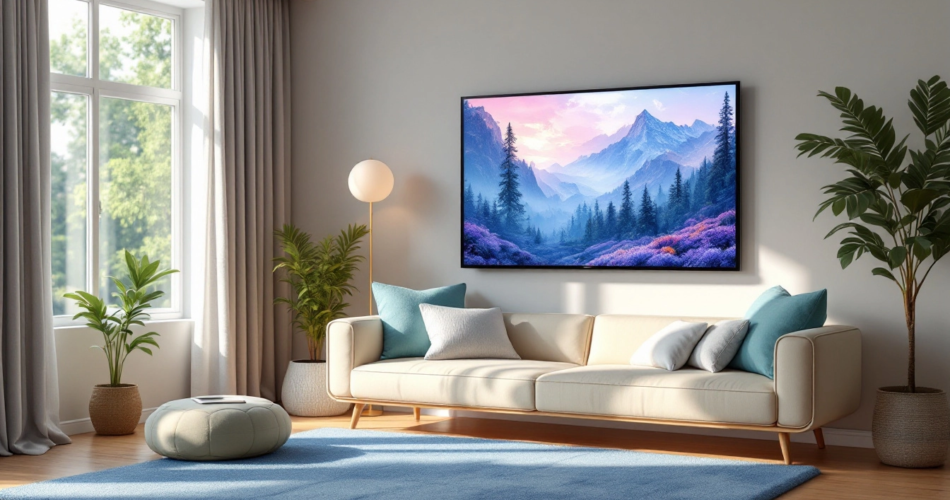Are you glued to your screens all day and feeling mentally drained? You’re not alone. In today’s digital age, excessive screen usage can negatively impact your focus, sleep, and overall mental health—a condition often jokingly referred to as “brain rot.” The good news? By implementing some simple and effective Reduce Screen Time Tips, you can regain balance, boost your productivity, and improve your well-being starting today. Let’s dive into actionable strategies to help you take control of your screen habits.
Table of Contents
- Why Reducing Screen Time Matters
- Set Limits and Stick to Them
- Engage in Non-Digital Activities
- Use Technology Wisely
- Create a Healthy Digital Environment
- FAQs
- Conclusion
Why Reducing Screen Time Matters
The effects of excessive screen time on mental health
Too much screen time can lead to what many call “brain rot,” characterized by decreased focus, memory issues, and heightened anxiety. Studies have shown that endless scrolling and digital distractions overstimulate the brain, making it harder to concentrate. According to a recent Health Group Study, individuals with high screen usage are more likely to experience mental fatigue.
Long-term impacts on physical health
Excessive screen time doesn’t just affect your mind; it takes a toll on your body too. Common issues include eye strain, neck pain caused by poor posture, and disrupted sleep due to blue light exposure. Data from the Vision Health Organization reveals that screen-related eye strain affects nearly 50% of tech users annually.
The benefits of reducing screen time
Reducing your screen time can deliver significant benefits, including improved mental clarity, better sleep, enhanced productivity, and better physical health. By implementing these tips, you can reclaim focus and energy for more meaningful tasks.
Learn more: The Science Behind Screen Time and Mental Fatigue
Set Limits and Stick to Them
Establish screen time goals
Start by setting realistic screen time goals based on your lifestyle. Family-focused guidelines from the Family Health Guidelines recommend no more than two hours of recreational screen time for adults and even less for kids. Define daily or weekly limits that work for you.
Use apps to track your usage
There are numerous apps and built-in phone features that help you monitor your screen time. Tools like ScreenTime or Moment can send alerts when you’ve exceeded your daily limit, keeping you accountable for your goals.
Schedule screen-free moments
Dedicate specific periods of your day to being screen-free. For instance, make mealtimes, bedtime, or early mornings off-limits for devices. This allows you to focus on relationships, relaxation, or mindfulness.
Explore: Top Productivity Apps to Track Tech Use
Engage in Non-Digital Activities
Try physical or outdoor activities
Spending time outdoors or engaging in physical activity can be a great antidote to screen overuse. Activities like walking, hiking, or playing sports not only improve your physical health but also offer a mental reset.
Take up hobbies or crafts
Engage in screen-free hobbies such as knitting, painting, cooking, or woodworking. These activities allow you to focus on tangible accomplishments and creativity without the interference of technology.
Practice mindfulness or meditation
Meditation is a powerful tool for clearing your mind. Techniques such as mindfulness exercises or guided meditations from resources like Meditation Resource can help you unwind and detach from screens.
Related: How Outdoor Activities Improve Mental Health
Use Technology Wisely
Focus on quality, not quantity
Shift to utilizing technology for personal growth and productivity instead of endless scrolling. Prioritize educational apps, coding software, or eBooks over time-wasters like social media.
Leverage screen time settings
Many devices offer built-in screen time features to set app limits or schedule “do not disturb” times. Use these tools to block high-distraction apps during work hours or family time.
Reduce notifications and distractions
Disable unnecessary notifications from your apps to minimize interruptions throughout the day. By taking control of your settings, you can maintain focus and decrease the temptation to check your phone constantly.
Check Out: Must-Try Digital Detox Apps
Create a Healthy Digital Environment
Invest in ergonomic setups
Creating a comfortable, ergonomic workspace can help mitigate issues like back pain or eye strain. Consider investing in an adjustable chair, a standing desk, or a monitor at eye level.
Prioritize blue light protection
Reduce the detrimental effects of blue light by using protective glasses, screen filters, or enabling night mode on your devices. These small changes can make a big impact on your sleep cycle and eye health.
Curate your digital space
Decluttering your digital environment is just as important as maintaining order in your physical space. Organize your files, delete unused apps, and unsubscribe from content that doesn’t serve you.
Learn More: Expert Guide to Ergonomic Screen Setups
Get Inspired: Organization Tips to Declutter Your Digital Life
Frequently Asked Questions
How much screen time is considered too much?
The answer depends on your age. Adults should aim for less than two hours of recreational screen time per day, while kids may require even stricter limits. According to the Pediatric Health Authority, screen time guidelines are particularly important for developing children.
What are the best apps for monitoring screen time?
Some of the top apps include Moment, ScreenTime, and RescueTime. These tools offer detailed insights and help you track your limits effortlessly.
Can reducing screen time improve sleep quality?
Yes! Reducing screen time, especially before bed, can greatly improve sleep quality. Blue light emitted by screens affects your melatonin levels, disrupting your sleep-wake cycle (Source: Sleep Foundation).
Conclusion
Striking a balance between screen use and real-life activities is essential for maintaining your mental and physical health. By applying the Reduce Screen Time Tips discussed here—from setting usage limits to engaging in rewarding offline activities—you can create a healthier relationship with technology. Start small by trying one tip today, and enjoy the freedom, clarity, and balance that come with reclaiming your time!



Fantastic arguments presented in the article. You have done a great job at convincing us. Thank you for writing this.
Your writing resonates with me; it feels like you comprehend my struggles.